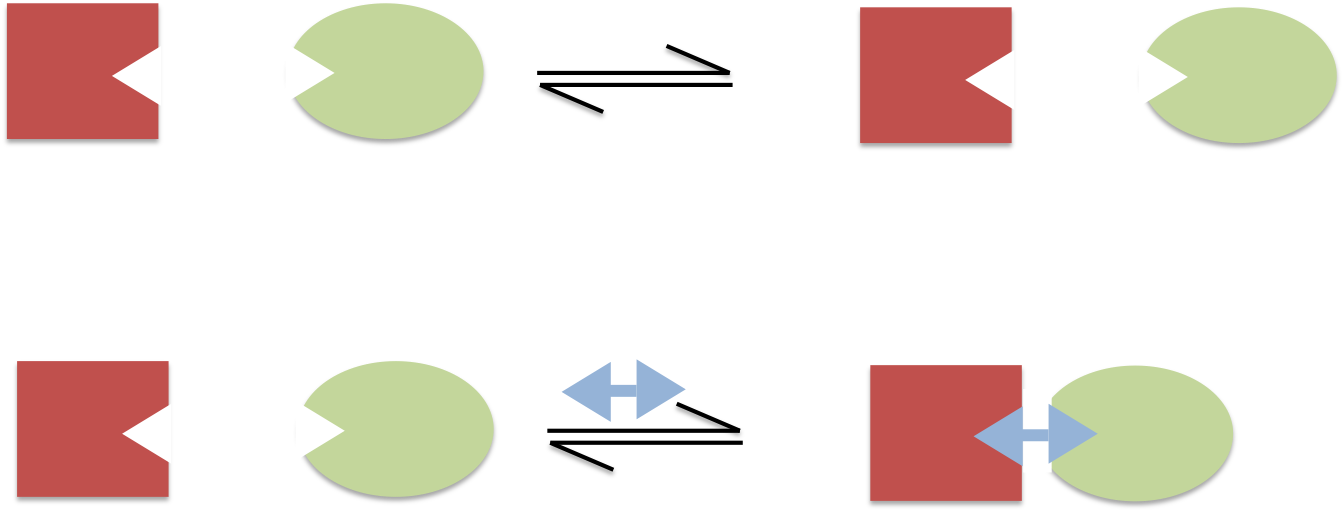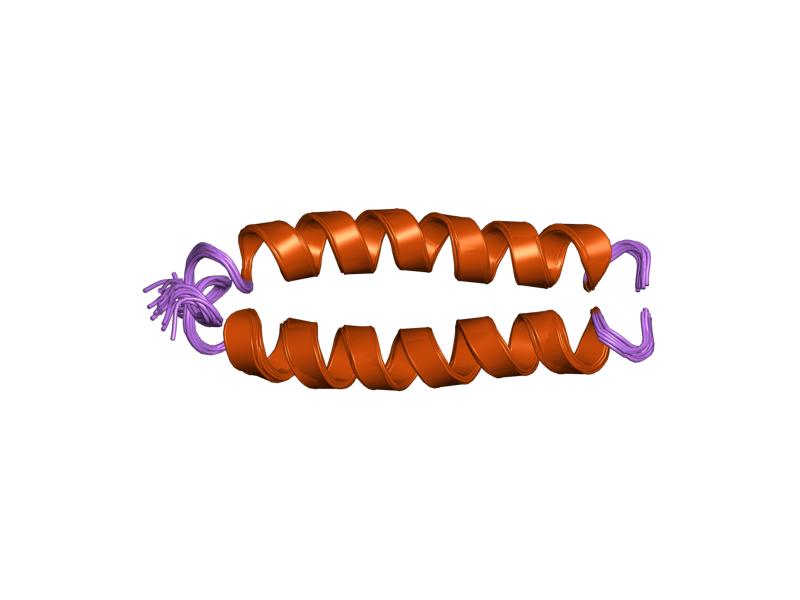|
FK1012
FK1012 is a dimer consisting of two molecules of tacrolimus (FK506) linked via their vinyl groups. It is used as a research tool in chemically induced dimerization applications. FK1012 is a chemical inducer of dimerization (CID) which makes the protein capable of dimerization or oligomerization of fusion protein Fusion proteins or chimeric (kī-ˈmir-ik) proteins (literally, made of parts from different sources) are proteins created through the joining of two or more genes that originally coded for separate proteins. Translation of this '' fusion gene'' ...s containing one or more FKBP12 domains. It is used in pharmacology to act as a mediator in the formation of FK506 dimer. FK506 binding proteins (FKBPs) do not normally form dimers but can be caused to dimerize in the presence of FK1012. Genetically engineered proteins based on FKBPs can be used to manipulate protein localization, signaling pathways and protein activation. References Further reading * {{cite journal, tit ... [...More Info...] [...Related Items...] OR: [Wikipedia] [Google] [Baidu] |
Chemically Induced Dimerization
Chemically induced dimerization (CID) is a biological mechanism in which two proteins bind only in the presence of a certain small molecule, enzyme or other dimerizing agent. Genetically engineered CID systems are used in biological research to control protein localization, to manipulate signalling pathways and to induce protein activation. History The first small molecule CID system was developed in 1993 and used FK1012, a derivative of the drug tacrolimus (FK506), to induce homo-dimerization of FKBP. This system was used ''in vivo'' to induce binding between cell surface receptors which could not bind in the normal way because they lacked the transmembrane and extracellular domain. Addition of FK1012 to the cells caused signal transduction. Chemically induced dimerization systems Applications CID has been used for a number of applications in biomedical research. In most applications each dimerizing protein is expressed as part of a fusion construct with other proteins of inter ... [...More Info...] [...Related Items...] OR: [Wikipedia] [Google] [Baidu] |
FKBP
The FKBPs, or FK506 binding proteins, constitute a family of proteins that have prolyl isomerase activity and are related to the cyclophilins in function, though not in amino acid sequence. FKBPs have been identified in many eukaryotes, ranging from yeast to humans, and function as protein folding chaperones for proteins containing proline residues. Along with cyclophilin, FKBPs belong to the immunophilin family. FKBP1A (also known as FKBP12) is notable in humans for binding the immunosuppressant molecule tacrolimus (originally designated FK506), which is used in treating patients after organ transplant and patients with autoimmune disorders. Tacrolimus has been found to reduce episodes of organ rejection over a related treatment, the drug ciclosporin, which binds cyclophilin. Both the FKBP-tacrolimus complex and the cyclosporin-cyclophilin complex inhibit a phosphatase called calcineurin, thus blocking signal transduction in the T-lymphocyte transduction pathway. This ther ... [...More Info...] [...Related Items...] OR: [Wikipedia] [Google] [Baidu] |
Dimer (chemistry)
In chemistry, dimerization is the process of joining two identical or similar Molecular entity, molecular entities by Chemical bond, bonds. The resulting bonds can be either strong or weak. Many symmetrical chemical species are described as dimers, even when the monomer is unknown or highly unstable. The term ''homodimer'' is used when the two subunits are identical (e.g. A–A) and ''heterodimer'' when they are not (e.g. A–B). The reverse of dimerization is often called Dissociation (chemistry), dissociation. When two oppositely-charged ions associate into dimers, they are referred to as ''Bjerrum pairs'', after Danish chemist Niels Bjerrum. Noncovalent dimers Anhydrous carboxylic acids form dimers by hydrogen bonding of the acidic hydrogen and the carbonyl oxygen. For example, acetic acid forms a dimer in the gas phase, where the monomer units are held together by hydrogen bonds. Many OH-containing molecules form dimers, e.g. the water dimer. Dimers that form based on w ... [...More Info...] [...Related Items...] OR: [Wikipedia] [Google] [Baidu] |
Tacrolimus
Tacrolimus, sold under the brand name Prograf among others, is an immunosuppressive drug. After Allotransplantation, allogenic organ transplant, the risk of organ Transplant rejection, rejection is moderate. To lower the risk of organ rejection, tacrolimus is given. The drug can also be sold as a topical medication in the treatment of T cell-mediated diseases such as atopic dermatitis, eczema and psoriasis. For example, it is prescribed for severe refractory uveitis after a bone marrow transplant, exacerbations of minimal change disease, Kimura's disease, and vitiligo. It can be used to treat Dry eye syndrome#Other, dry eye syndrome in cats and dogs. Tacrolimus inhibits calcineurin, which is involved in the production of interleukin-2, a molecule that promotes the development and cell proliferation, proliferation of T cells, as part of the body's learned (or adaptive immune response, adaptive) immune response. Chemically, it is a macrolide lactone that was first discovered in ... [...More Info...] [...Related Items...] OR: [Wikipedia] [Google] [Baidu] |
Vinyl Group
In organic chemistry, a vinyl group (abbr. Vi; IUPAC name: ethenyl group) is a functional group with the formula . It is the ethylene (IUPAC name: ethene) molecule () with one fewer hydrogen atom. The name is also used for any compound containing that group, namely where R is any other group of atoms. An industrially important example is vinyl chloride, precursor to PVC, a plastic commonly known as ''vinyl''. Vinyl is one of the alkenyl functional groups. On a carbon skeleton, sp2-hybridized carbons or positions are often called vinylic. Allyls, acrylates and styrenics contain vinyl groups. (A styrenic crosslinker with two vinyl groups is called '' divinyl benzene''.) Vinyl polymers Vinyl groups can polymerize with the aid of a radical initiator or a catalyst, forming vinyl polymers. Vinyl polymers contain no vinyl groups. Instead they are saturated. The following table gives some examples of vinyl polymers. Synthesis and reactivity Vinyl derivatives are alke ... [...More Info...] [...Related Items...] OR: [Wikipedia] [Google] [Baidu] |
Fusion Protein
Fusion proteins or chimeric (kī-ˈmir-ik) proteins (literally, made of parts from different sources) are proteins created through the joining of two or more genes that originally coded for separate proteins. Translation of this '' fusion gene'' results in a single or multiple polypeptides with functional properties derived from each of the original proteins. ''Recombinant fusion proteins'' are created artificially by recombinant DNA technology for use in biological research or therapeutics. '' Chimeric'' or ''chimera'' usually designate hybrid proteins made of polypeptides having different functions or physico-chemical patterns. ''Chimeric mutant proteins'' occur naturally when a complex mutation, such as a chromosomal translocation, tandem duplication, or retrotransposition creates a novel coding sequence containing parts of the coding sequences from two different genes. Naturally occurring fusion proteins are commonly found in cancer cells, where they may function as oncop ... [...More Info...] [...Related Items...] OR: [Wikipedia] [Google] [Baidu] |
Macrolides
Macrolides are a class of mostly natural products with a large macrocycle, macrocyclic lactone ring to which one or more deoxy sugars, usually cladinose and desosamine, may be attached. Macrolides belong to the polyketide class of natural products. Some macrolides have antibiotic or antifungal activity and are used as pharmaceutical drugs. Rapamycin is also a macrolide and was originally developed as an antifungal, but has since been used as an immunosuppressant drug and is being investigated as a potential Life extension, longevity therapeutic. Macrolides are a diverse group with many members of very different properties: * Macrolides with 14-, 15-, or 16-membered rings and two attached sugar molecules are antibiotics that bind to bacterial ribosomes, the key representative being erythromycin. The term "macrolide antibiotics" tend to refer to just this class. * Some macrolides with very large (20+ membered) rings are immunosuppresants, the prototypical one being rapamycin. * S ... [...More Info...] [...Related Items...] OR: [Wikipedia] [Google] [Baidu] |
Dimers (chemistry)
Dimers is a sports betting analytics platform that provides predictive tools, data-driven insights, news, and betting content for sports fans and bettors. Operating under the umbrella of Cipher Sports Technology Group, Dimers has offices in Melbourne and New York. History Dimers.com was launched on August 1, 2020, shortly after its parent company Cipher Sports Technology Group was formed through the merger of two Australian companies: iRival Media and Hypometer Technologies. iRival Media, founded in October 2019 by Adam Fiske and Nick Slade, focused on delivering content to the sports betting market.Hypometer Technologies, established in 2015 by Katie Prowd and Darryl Woodford, specialized in predictive analytics and machine learning for sports. Dimers’ data has been cited by publications such as ''Sports Illustrated,'' ''USA Today,'' and ''The Arizona Republic ''The Arizona Republic'' is an American daily newspaper published in Phoenix. Circulated throughout Arizo ... [...More Info...] [...Related Items...] OR: [Wikipedia] [Google] [Baidu] |
Heterocyclic Compounds With 3 Rings
A heterocyclic compound or ring structure is a cyclic compound that has atoms of at least two different chemical element, elements as members of its ring(s). Heterocyclic organic chemistry is the branch of organic chemistry dealing with the synthesis, properties, and applications of organic heterocycles. Examples of heterocyclic compounds include all of the nucleic acids, the majority of drugs, most biomass (cellulose and related materials), and many natural and synthetic dyes. More than half of known compounds are heterocycles. 59% of US FDA-approved drugs contain nitrogen heterocycles. Classification The study of organic heterocyclic chemistry focuses especially on organic unsaturated derivatives, and the preponderance of work and applications involves unstrained organic 5- and 6-membered rings. Included are pyridine, thiophene, pyrrole, and furan. Another large class of organic heterocycles refers to those fused to benzene rings. For example, the fused benzene deriv ... [...More Info...] [...Related Items...] OR: [Wikipedia] [Google] [Baidu] |
Piperidines
Piperidine is an organic compound with the molecular formula (CH2)5NH. This heterocyclic compound, heterocyclic amine consists of a six-membered ring containing five methylene bridges (–CH2–) and one amine bridge (–NH–). It is a colorless liquid with an odor described as objectionable, typical of amines. The name comes from the genus name ''Piper (genus), Piper'', which is the Latin word for Black pepper, pepper. Although piperidine is a common organic compound, it is best known as a representative structure element within many pharmaceuticals and alkaloids, such as natural-occurring Solenopsin, solenopsins. Production Piperidine was first reported in 1850 by the Scottish chemist Thomas Anderson (chemist), Thomas Anderson and again, independently, in 1852 by the French chemist Auguste André Thomas Cahours, Auguste Cahours, who named it. Both of them obtained piperidine by reacting piperine with nitric acid. Industrially, piperidine is produced by the hydrogenation of p ... [...More Info...] [...Related Items...] OR: [Wikipedia] [Google] [Baidu] |





